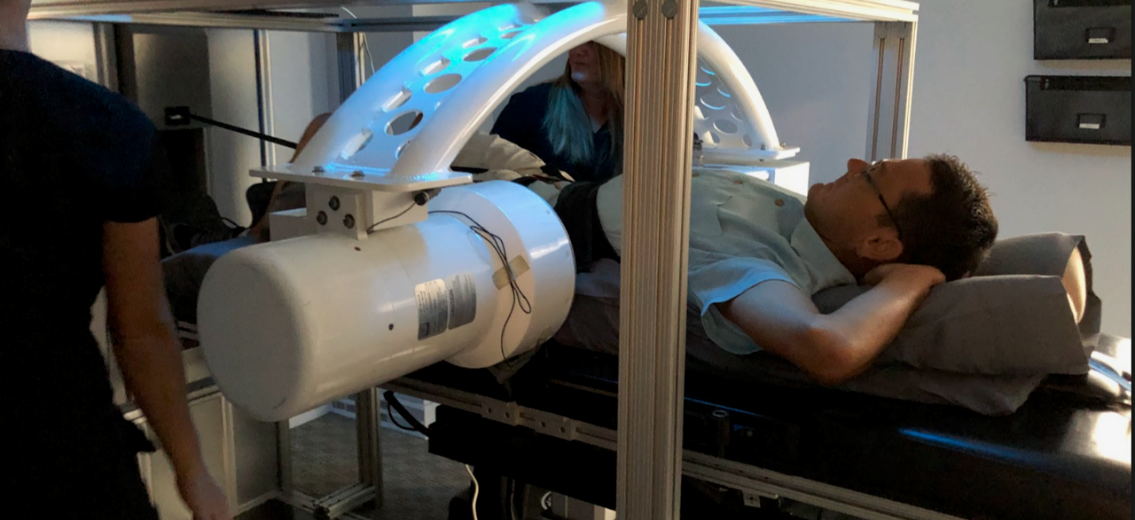Delighted to share a news release about an interesting study just published, looking at the mechanisms of the patented oscillation component of IDD Therapy Spinal Decompression under fluoroscopy.
Active oscillatory signaling introduced during the high-tension period of decompression treatment may lead to higher levels of self-healing through improved tissue repair and uniform separation of the vertebrae.
A non-invasive treatment that works to mechanically decompress the spine in order to provide back and neck pain relief from herniated and degenerated disc disease is generating new interest in the arena of cellular biology.
Videofluoroscopy imaging was used by researchers to study how the spine responds to dynamic forces during IDD Therapy® treatment, an advanced spinal decompression treatment performed with a device called the Accu-SPINA® System.

IDD Therapy specialist, Richard E. Busch III D. C. in collaboration with Prahlad G. Menon, Ph.D., took images of the spine while treating a patient using a primary sine wave decompression force, and then again using the same primary decompression force plus an additional oscillating waveform at the height of each treatment cycle for comparison.

The results were published in the online edition of the Journal of Rehabilitation Therapy. Researchers, Prahlad G Menon, Bioengineering, University of Pittsburgh, and Sergey Leo Sorin, M.D., DABFM of the International Institute of Holistic Medicine, observed that the treatment performed with the additional oscillation feature demonstrated greater uniformity in the positioning of the vertebral structures while unloading was occurring. Having equal force around the circumference of the disc causes superior and even distraction.

When a joint is under excessive force from either the anterior or posterior side of the vertebra, the joint can rotate due to uneven loading/unloading. Eliminating rotational movement of the joint reduces the risk of strain on surrounding tissues allowing for a better treatment outcome.
The addition of oscillatory signaling changed the behavior of vertebral structures during treatment, indicating that the connective tissues and nerve endings between the vertebral structures respond differently when oscillation is introduced.
Oscillation may play a role in the higher treatment outcomes achieved through IDD Therapy® because the treatment employs dynamic specificity for intra-cellular communication. Oscillatory signaling can be a powerful means of encoding and transferring information within the body.

The biomechanical benefit of uniform unloading, due to the addition of oscillatory signaling, is increased overall space between the vertebra during treatment, which has an inverse relationship (and desirable effect) on lower intradiscal pressure to reduce pain and aid healing.
Dr. Busch stated, “We believe that IDD Therapy® using the Accu-Spina® may achieve 92% positive results because the secondary oscillatory signal induces mechanotransduction; that is, mechanical stimuli can convert effectively into electrochemical activity at the cellular level.”
“While more studies are needed,” stated Dr. Sorin, “it’s exciting to begin the exploration of the regenerative properties possible with this form of advanced spinal decompression on the Accu-SPINA® System.”
Link to study: A Single Session of Spinal Decompression with Oscillation and Videofluoroscopy (rehabiljournal.com)
—————————
For clinicians interested to know more about providing IDD Therapy:
UK & International: https://iddtherapy.co.uk/become-a-provider/
USA https://iddtherapy.co.uk/uspt/




